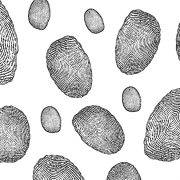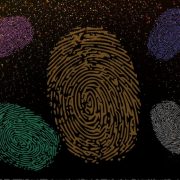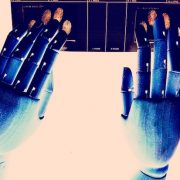Fingerprints: “Baby,” It’s You!
Skin, as you all know, is the largest organ of the human body. It’s the non-manmade tarp that covers our insides—organs, bones, and all the other goopy-gooey stuff that autopsies and surgeons expose when those needs arise.
Our skin protects us from microbes and the weather. Obviously we wouldn’t want rain, snow, and sleet pounding on our stomachs and livers, nor would we want hot summertime sunshine baking our spleens, or cold wintertime air forming icicles that would hang precariously from our ribcages.
Skin helps regulate body temperature and permits us to enjoy the pleasures of a warm embrace and the sensation of brisk and cool fall air.
The covering of our bodies may look smooth, but of course it’s not. Wrinkles and creases work similar to the flexing baffles of an old pump organ, or an accordion. Those instruments work by using air pressure that’s created when bellows are expanded and contracted. The laugh lines around our eyes and the folds at our elbows, for example, allow the skin there to move and stretch.
A close look at our hands and feet reveals ridges and sweat pores that allow the hands and feet to grasp surfaces firmly. Without those, picking up or grasping smooth objects could become nearly impossible.
Skin helps homicide detectives solve murders
Friction ridge skin has distinct features that remain from before birth until after death when our bodies go through the decomposition process.
When those unique features come into contact with various surfaces they leave impressions of those corresponding unique details. These impressions are, of course, fingerprints, the characteristics that helps investigators find criminals by comparing prints found at a crime scene with those of a known suspect.
So how and when do we first develop those identifiable fingerprints?
Fetal Growth
During the third month, the embryo’s nervous system and sense organs develop. Arms and legs begin to move and reflexes such as sucking are noticed. Facial expressions can be visualized at this stage of growth.
This is also when early fingerprints begin to take shape—friction ridges begin to form at about 10.5 weeks estimated gestational age (EGA).
Prints continue to mature in depth as the embryo passes into the second trimester.
Second Trimester: Fingerprints are Here to Stay
Significant growth occurs within The second trimester. Bone growth is active, the body becomes covered with fine hair. Friction ridges continue to grow until approximately 16 weeks EGA. That’s the point when the minutiae, the specific, fine points in a finger image that identifies one person from another, become set.
It is at this stage of life—16 weeks EGA—when this little person who has not yet been born now has an identity all its own.
Yes, Baby, it’s You!










